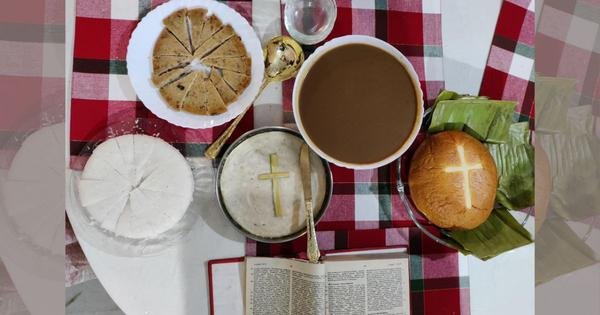The Taste of Self-Reflection: Holy Week in Christian Tradition
A Time for Self-Control and Spiritual Connection
Food and drink hold a special place in Christianity, serving as a means to connect with the divine. From feast days honoring saints to the symbolism of bread and wine, culinary traditions are deeply rooted in religious rituals.
In Kerala, Malayali Christians embrace this connection wholeheartedly, with a love for meat and alcohol that goes beyond mere indulgence. However, there are times when self-control and introspection take center stage, such as during the season of Lent.
A Season of Simplicity
Lent is a 40-day period symbolizing the Israelites’ 40-year exodus and Jesus Christ’s 40-day fast. While these historical figures faced harsh desert conditions, modern Christians face a different challenge: 40 days without their cherished Kerala Christian delicacies.
Despite the deprivation, this season offers its own unique flavors. The sweetness of Christmas gives way to the bitter and bland tastes of Maundy Thursday and Good Friday.
Unusual Dishes and Their Symbolism
Holy Week begins with Palm Sunday, but Syrian-Christians start their celebrations a day early with Kozhukkatta Shani or Kozhukkatta Saturday. Kozhukkatta is a tasty rice-flour dumpling filled with grated coconut and jaggery, yet its symbolism is sobering: it represents the stones thrown at Christ during his crucifixion.
- Maundy Thursday commemorates the Passover ritual, featuring pesaha appam or indriappam, an unleavened bread.
- This bread is shared among family members, accompanied by small crosses made from blessed palm leaves and a dip of coconut milk, rice flour, and jaggery.
The Bitter Taste of Good Friday
Good Friday marks the anniversary of Christ’s death, and observant Christians consume only one meal on this day. Church rituals reenact Christ’s journey carrying his cross, with the congregation participating in the “Way of the Cross” procession.
The Good Friday meal is simple and humble, often served at church. It includes kanji (rice porridge), payar (red cowpeas), and pappadam, with a bitter gourd side-dish symbolizing the sorrowful atmosphere of the day.
To represent the vinegar offered to Jesus, the faithful prepare and drink kaippu neeru, a decoction made from bitter gourd leaves, neem, and other bitter leaves mixed with vinegar and water.
Food for Thought
After the trials of Holy Week, the faithful are rewarded with the Easter banquet. But why endure this period of deprivation and unpleasant flavors? Perhaps the answer lies in the sense of community fostered by religious cultures. Holy Week’s rituals, meaningful for some and challenging for others, persist because they nurture a community that values them, preserving both the culture and its creator.



